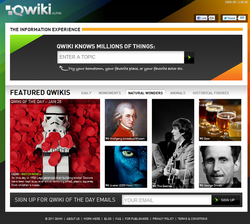

Qualcomm announced its intent to acquire NXP Semiconductors for $47 billion in October 2016. Mollenkopf said he would expand Qualcomm's focus to wireless technology for cars, wearable devices, and other new markets. Qualcomm announced Steven Mollenkopf would succeed Paul Jacobs as CEO in December 2013. In the same year they have acquired Flarion Technologies, a developer of wireless broadband Orthogonal Frequency Division Multiplex Access (OFDMA) technology. Whereas Irwin Jacobs focused on CDMA patents, Paul Jacobs refocused much of Qualcomm's new research and development on projects related to the Internet of things. Jacobs, son of Qualcomm founder Irwin Jacobs, was appointed as Qualcomm's new CEO. : 316 By 2001, 65 percent of Qualcomm's revenues originated from outside the United States with 35 percent coming from South Korea. Around this time, Qualcomm established offices in Europe, Asia Pacific, and Latin America. 39 percent of its sales were from CDMA technology, followed by licensing (22%), wireless (22%), and other products (17%). By 2000, Qualcomm had grown to 6,300 employees, $3.2 billion in revenues, and $670 million in profit.

: 310–311 Since the base station division was losing $400M a year (having never sold another base station after making its 10th sale), profits skyrocketed in the following year, and Qualcomm was the fastest growing stock on the market with a 2,621 percent growth over one year. Its base station and cell-phone manufacturing businesses were spun-off in order to focus on its higher-margin patents and chipset businesses. In 1998, Qualcomm was restructured, leading to a 700-employee layoff. The company had $383 million in annual revenue in 1995 and $814 million by 1996. The second funding round was done to raise money for the mass manufacturing of CDMA-based phones, base-stations, and equipment, after most US-based cellular networks announced they would adopt the CDMA standard. An additional $486 million was raised in 1995 through the sale of 11.5 million more shares. To obtain funding, the company filed an initial public offering in September 1991 raising $68 million. Qualcomm was operating at a loss in the 1990s due to its investment in CDMA research. Omnitracs profits helped fund Qualcomm's research and development into code-division multiple access (CDMA) technologies for cell phone networks. By 1989, Qualcomm had $32 million in revenue, 50 percent of which was from an Omnitracs contract with Schneider National. Qualcomm grew from eight employees in 1986 to 620 employees in 1991, due to demand for Omnitracs. Qualcomm merged with Omninet in 1988 and raised $3.5 million in funding in order to produce the Omnitracs satellite communications system for trucking companies. It started as a contract research and development center largely for government and defense projects. The company was named Qualcomm for "QUALity COMMunications". Qualcomm was created in July 1985 by seven former Linkabit employees led by Irwin Jacobs.
QWIKI STOCK SOFTWARE
It also developed semiconductor components or software for vehicles, watches, laptops, wi-fi, smartphones, and other devices. Over the years, Qualcomm has expanded into selling semiconductor products in a predominantly fabless manufacturing model.
QWIKI STOCK SERIES
Afterwards there was a series of legal disputes about pricing for licensing patents required by the standard. After a heated debate in the wireless industry, the 2G standard was adopted with Qualcomm's CDMA patents incorporated.

Its early research into CDMA wireless cell phone technology was funded by selling a two-way mobile digital satellite communications system known as Omnitracs. Qualcomm was established in 1985 by Irwin M. It owns patents critical to the 5G, 4G, CDMA2000, TD-SCDMA and WCDMA mobile communications standards. It creates semiconductors, software, and services related to wireless technology. Qualcomm ( / ˈ k w ɒ l k ɒ m/) is an American multinational corporation headquartered in San Diego, California, and incorporated in Delaware.


 0 kommentar(er)
0 kommentar(er)
